- News
- Reviews
- Bikes
- Accessories
- Accessories - misc
- Computer mounts
- Bags
- Bar ends
- Bike bags & cases
- Bottle cages
- Bottles
- Cameras
- Car racks
- Child seats
- Computers
- Glasses
- GPS units
- Helmets
- Lights - front
- Lights - rear
- Lights - sets
- Locks
- Mirrors
- Mudguards
- Racks
- Pumps & CO2 inflators
- Puncture kits
- Reflectives
- Smart watches
- Stands and racks
- Trailers
- Clothing
- Components
- Bar tape & grips
- Bottom brackets
- Brake & gear cables
- Brake & STI levers
- Brake pads & spares
- Brakes
- Cassettes & freewheels
- Chains
- Chainsets & chainrings
- Derailleurs - front
- Derailleurs - rear
- Forks
- Gear levers & shifters
- Groupsets
- Handlebars & extensions
- Headsets
- Hubs
- Inner tubes
- Pedals
- Quick releases & skewers
- Saddles
- Seatposts
- Stems
- Wheels
- Tyres
- Health, fitness and nutrition
- Tools and workshop
- Miscellaneous
- Cross country mountain bikes
- Tubeless valves
- Buyers Guides
- Features
- Forum
- Recommends
- Podcast
feature
 Bike commuting (CC BY-NC-SA 2.0 Dave Atkinson:Flickr) 03
Bike commuting (CC BY-NC-SA 2.0 Dave Atkinson:Flickr) 0315 easy ways to carry stuff on your bike
Your bicycle might be in its finest form when unencumbered by anything more than the rider but it can also be a darn fine packhorse, too. Whether you need to take just a handful of spares and essentials or load up with a delivery round’s worth of produce, there’s an effective pedal-friendly option available. Here are the solutions to your cargo conundrums.
Light loads
It’s probably fair to say that most leisure riders, if not commuters, need to carry little more than a multi-tool, a spare inner tube, some tyre levers and maybe their keys and wallet. For this, and even a bit more, the options are almost endless.
Pockets
Never underestimate the carrying potential of your existing kit. Even a jersey’s rear pockets can be veritable trove of essential ride treasure with everything up to mini-pumps happily swallowed. The downside is, Lycra can get a bit saggy and unstable. However, purpose-made commuting jackets often come with a range of storage options, and commuting trousers often boast multiple pockets.
Pros: No cost; easy to retrieve cargo; purpose-made commuting kit often has loads of pockets
Cons: Can weigh clothing down and be uncomfortable; limited space
> Read more: The best casual cycling commuter wear
Seat packs
The old favourite: seat packs come in all shapes, sizes, colours and even fitting systems – from proprietary tech to the truly universal Velcro strap. With such a huge range to choose from, you should be able to find one that perfectly suits your specific requirement. They’re also super-cheap, simple and easy transferable from one bike to another.
Pros: Cheap; huge range; easily transferable from bike to bike
Cons: Limited carrying capacity; easily steal-able
Handlebar bags
I’m a big fan of handlebar bags and although they do put a bit of weight above your front wheel which can affect handling, their limited capacity means you’ll probably not carry anything heavy enough to really upset the ride. The payback is they’re quickly accessible, can hold a fair bit more than a saddle pack – great for keen photographers to keep their camera to hand – and they often come with a clear top pocket perfect for maps or, more likely these days, your mobile phone. And if you pick one with a shoulder strap, you can easily take it with you off the bike.
Pros: Quick to access contents; decent capacity; easy to take with you off the bike
Cons: Can affect handling; better quality might also require a clamping system
Hydration pack
Hydration packs are designed first and foremost to take an integrated bladder which will reward you with vital liquids on your tongue-parching commute across the Atacama… But, anyway, they also come with a fair few pockets to load up with stuff you might actually need, so why not use them?
Pros: Plenty of pockets; comfortable to carry
Cons: Who really needs hydration that much on a typical daily commute?
Other options
Topeak’s Ninja range features a selection of different kit-carrying accessories – including the Road Box – that attach to a compatible bottle cage.
> Emergency essentials: 10 things to take with you every ride
Medium loads
If you need to take more than just the daily essentials – maybe lunch, some clean and dry clothes for work, and your laptop – or fancy doing a spot of light shopping, then here’s a veritable smorgasbord of potential options.
Top tube and frame bags
I’ve put top tube and frame bags – often referred to as bikepacking bags – in the medium load section because, if used together they can offer substantial carrying capacity. However, individually, they often seem to be only a little more useful than a particularly bulbous seat pack or bar bag. The reason for this is that their size and shape is limited by their positioning, so don’t expect to carry any large single items – probably no laptops, for example. But if all you need to do is shift a load of spare pants and your sandwiches, then fill your boots, er, bags.
Pros: Cargo weight is on the bike, not on you; can keep your eye on your kit as your ride
Cons: Funny shapes may limit carrying potential
> Read more: 17 of the best bikepacking bags
Extended seat packs
As well as the typical essentials-only seat pack there is also a range of similar products that offer far greater carrying capacity. These often attach to the seatpost as well as underneath the saddle and extend out over the rear wheel. However, for all their profusion of space and pockets, they are only relatively lightweight bits of kit that don’t benefit from the same kind of structural strength as a rack-and-pannier-bag combo, so don’t overload them.
Pros: Simple solution for carrying a bit more
Cons: Restricted weight limits; shape limits cargo size; can be a slight faff to fit and remove
Messenger bags
The funky option for flash young Harrys about town. Wear a messenger or courier bag while riding and you’ll instantly feel like you’re in a scene from Premium Rush. As the luggage of choice for people who make their living carrying stuff around by bike, messenger bags obviously have some things going for them. Most notably, this is an impressive carrying capacity – perfect for files and laptops – as well as easy access and, with the right strap and stabiliser, decent comfort (although I would advise against carrying too much weight). They also look good and there’s no end of choice.
Pros: Often quite cavernous; stylish; easy to enhance with accessories such as lights
Cons: Make sure you use a stabilising strap otherwise they can be unwieldy; top brands can be expensive
Rucksacks
The humble rucksack is most people’s first thought when it comes to carrying while cycle commuting, but it’s not necessarily the best option. With a padded back section that can easily get you and it sweaty, and heavy weights or poor fitting leading to back strain, rucksacks are only really good for light to medium loads. There is plenty of choice, though, and cycling-specific rucksacks help negate the negatives.
Pros: Lots of pockets and carrying potential; lots of choice including cycling-specific options; excellent platform for extra reflectivity to enhance road presence
Cons: Poor fitting can put strain on back; can get sweaty; not great for very heavy loads
> Read more: 17 of the best cycling rucksacks
Baskets
Front baskets may only suit some bikes and some riders, but don’t discount them out of hand: they’re easy to use and can carry a surprising amount. The downside is, they’re not covered so everybody can see what you’ve got, and all the weight is over the front wheel so they can make control a little less surefooted. But they’re good, simple, honest carrying.
Pros: Easy to chuck stuff in; big carrying capacity; classic aesthetics (if you like that sort of thing)
Cons: Can be unwieldy having weight over front wheel; easy to nick stuff from them; can’t carry them and contents with you off the bike
Rack packs/trunk bags
Rack packs are often the same kind of size as extended seat packs, but they have the added advantage of actually sitting on a rear rack so are far more stable and happier with heavier loads. Most come with a range of pockets and some even feature extendable flap-down side pockets – a bit like faux panniers – so you can really load up with kit.
Pros: Secure for reasonably heavy load; decent carrying potential; easy to take with you off the bike
Cons: Need a rear rack
> Read more: Cycling luggage – recommended bags & panniers
Big loads
If your lifestyle requires more than will happily fit into one bag, don’t fret: the bike world has some answers. Bear in mind we’re getting into specialist territory here, so these options may not be cheap. However, when heavy lifting and ultimate load lugging is key, this kit will keep you spinning.
Pannier bags
The classic option for globe-trotting pedal pushers; you’ll be amazed what you can carry in a quartet of panniers – two at the back, two on the front – or even just a pair. While single large loads are out of the question, if you’ve got a substantial collection of small to medium items that need transporting, it’s easy to spread the load between bags, both for weight distribution and simply to know where you’ve put what. You’ll also find panniers with fantastic waterproofing and some that have the option of converting into a rucksack off the bike.
Pros: Easy to organise load with separate bags; very good carrying potential; weight is spread around bike so doesn’t affect handling too much
Cons: Difficult to carry four panniers at once off the bike; will need racks
> Read more: 20 of the best bicycle panniers and racks
Trailers
Trailers are possibly the undervalued king of heavy load carrying – some people are absolute converts, but you really don’t see that many around. Which is a shame because they can carry far more than other options, yet – unlike cargo bikes – you can enjoy your bike as normal when you don’t need them. Initial set-up can be a bit fiddly and expect to alter the way you ride slightly, however, some trailers can even be used off-road.
Pros: Huge capacity when you need it; remove and enjoy your bike as normal when you don’t
Cons: Can be fiddly to attach to bike; expect some ride compromises
Cargo bikes
City dwellers, Dutch folk and eco warriors will know all about cargo bikes because they are the invention that will save the earth. Well, maybe not quite, but they could certainly keep more cars off the road if we all adopted them with the same gusto as some continental families who even use ‘bakfiets’ to get the kids to school. My personal favourite is legendary bike guru Mike Burrows’s 8 Freight, but there are plenty of other options available.
Pros: Purpose designed for transporting heavy loads; fantastic capacity
Cons: Rather unwieldy; might not need a car but you’ll probably still need a garage to store it; generally not cheap
E-cargo bikes
What could be even more practical than a cargo bike? An electric cargo bike! Take all the bonuses I’ve just mentioned about its pedal-only brother and magnify them with the added bonus of motorised assistance. Just make sure the battery has enough charge because you don’t want to be facing a long, hilly ride home on one of these behemoths fully loaded without at least a little bit of e-help.
Pros: The ultimate in painless load lugging
Cons: Even more expensive; even more unwieldy (especially if you’ve run out of charge)
Latest Comments
- hawkinspeter 27 min 51 sec ago
Local 'nimbyism' dismissed as consensus is new scheme will 'increase footfall'...
- chrisonabike 1 hour 15 min ago
If they're formally recognising phone addiction, and have noted that our eating habits (driven by stuff people want to sell us) are obeseogenic ......
- Hirsute 2 hours 42 min ago
I believe the Road Traffic Act 1988 disagrees with you.
- Secret_squirrel 4 hours 26 min ago
Yes. Just like there's no push rod brakes or U brakes any more. Get with the program granddad.
- chrisonabike 4 hours 24 min ago
Actually everyone is wrong, it was the 16th century as shown in the glass at Stoke Poges church *. Plus horns predate bells as a way of alerting...
- dreamlx10 5 hours 3 min ago
Looks like the perpetrators were not Italian
- Zebulebu 13 hours 30 min ago
You can't enter BC races because you don't have a BC license?...
- Hirsute 21 hours 15 min ago
Another pathetic sentence for killing a cyclist....
- HoarseMann 22 hours 32 min ago
...and maybe a third? Don't forget the M49 'ghost' junction: https://www.bristolpost.co.uk/news/bristol-news/work-m49-ghost-junction-...

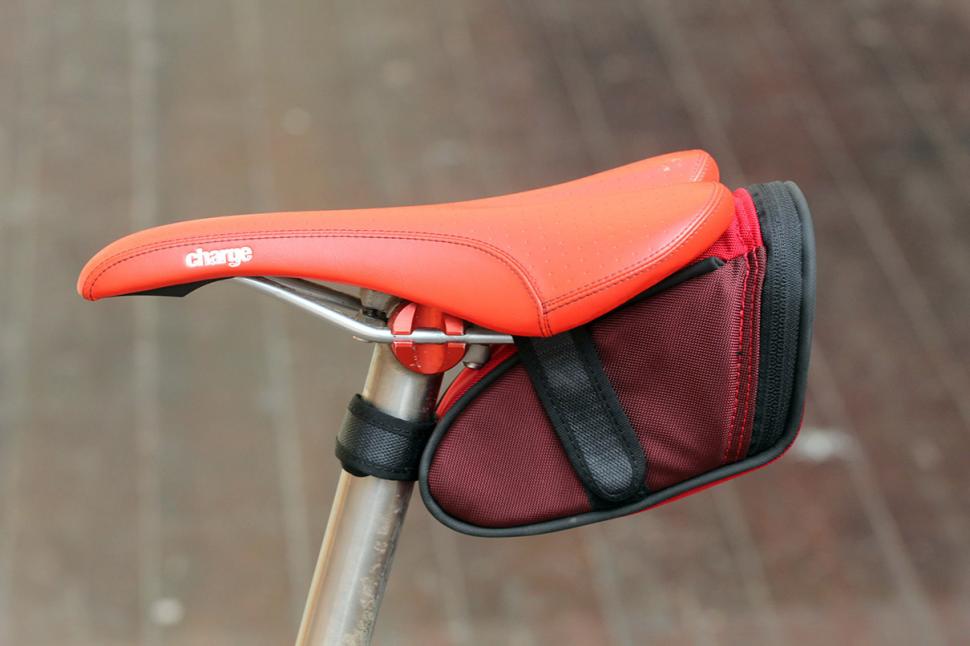
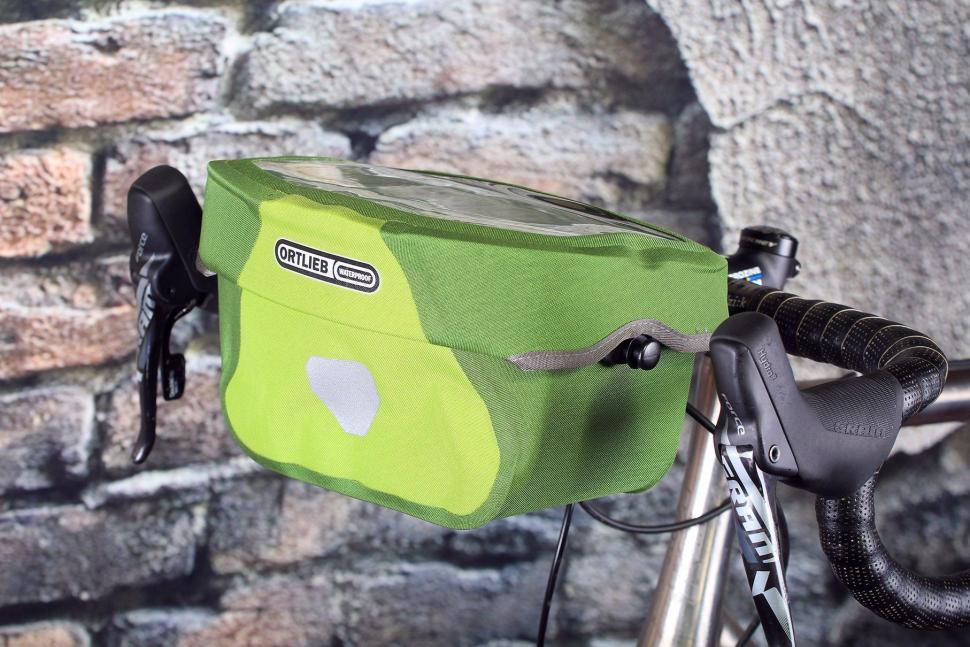



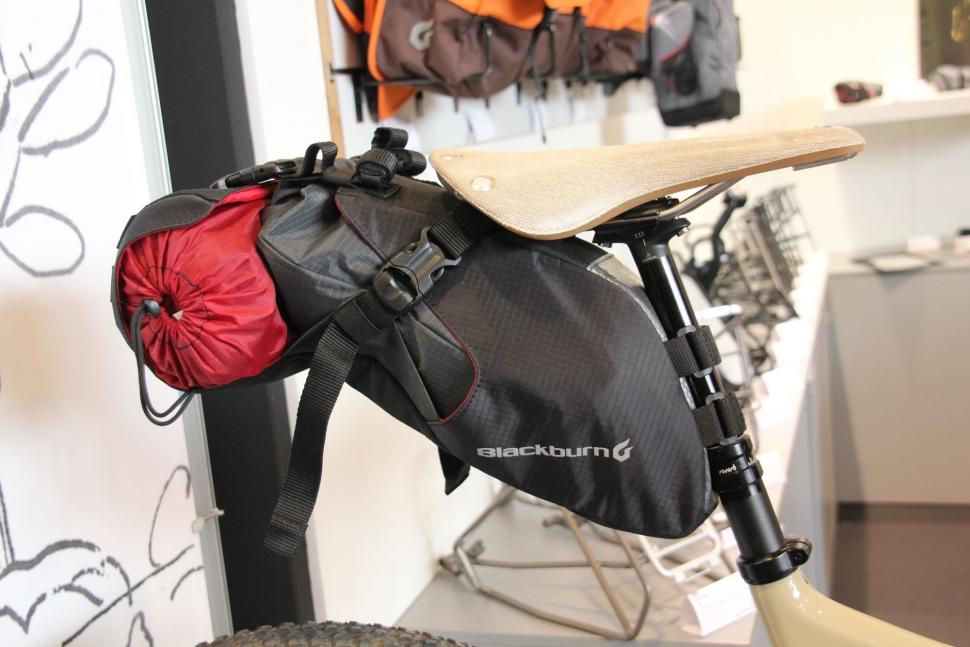
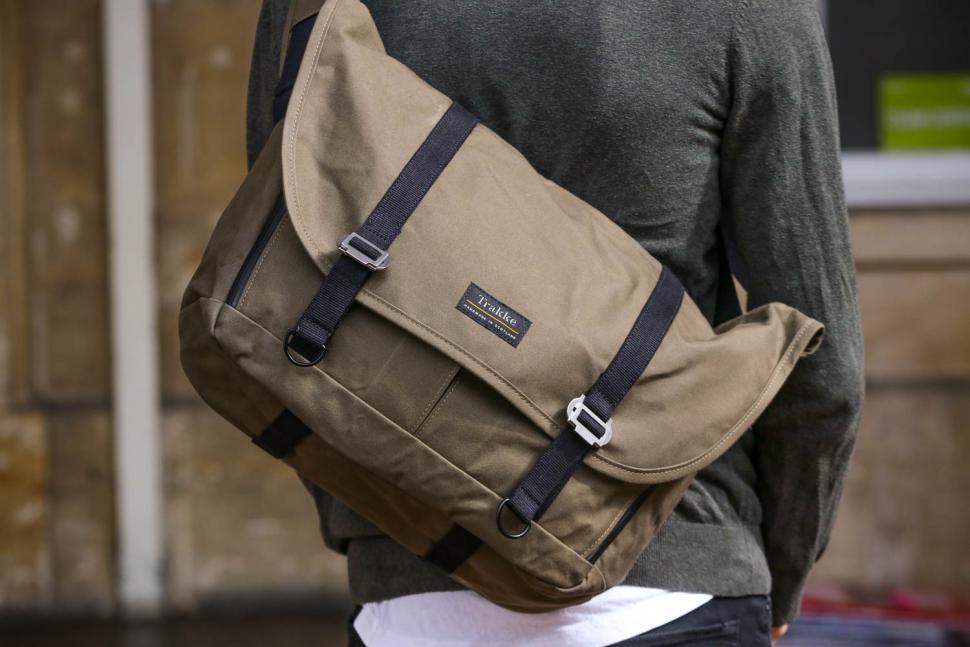

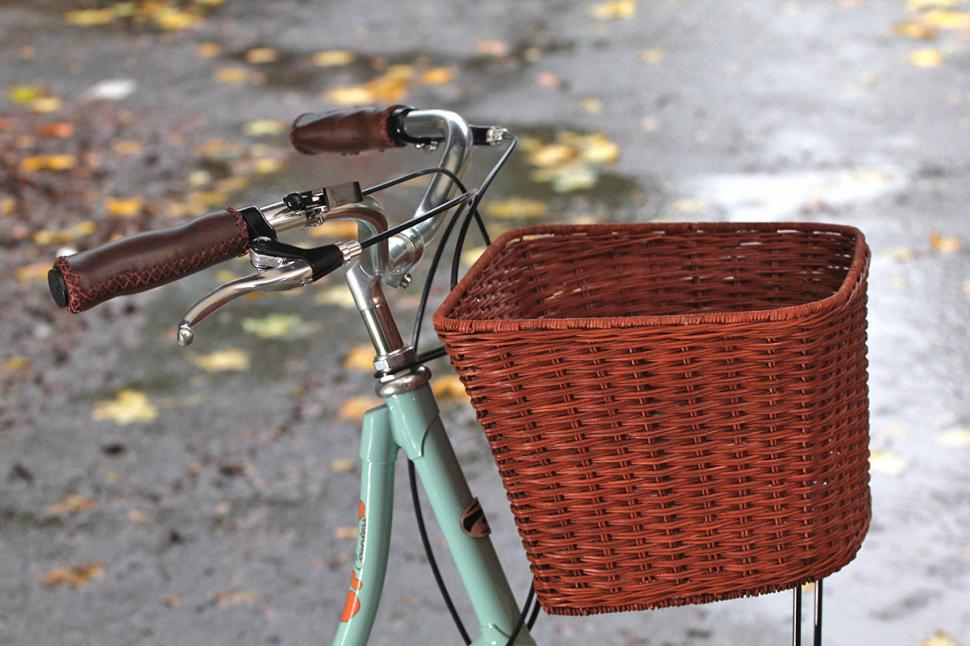

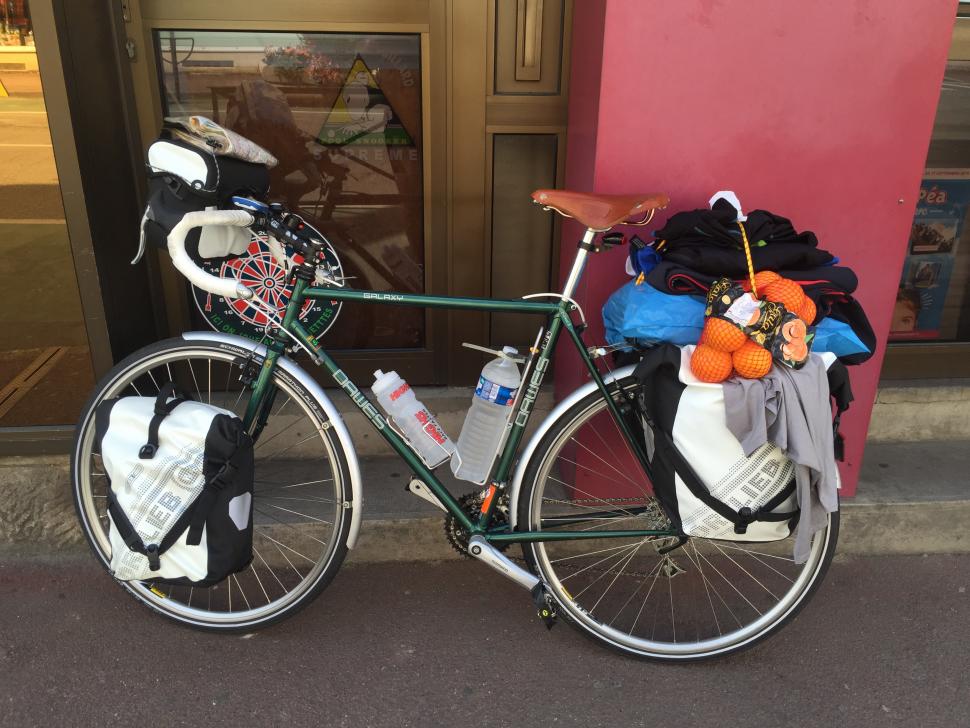

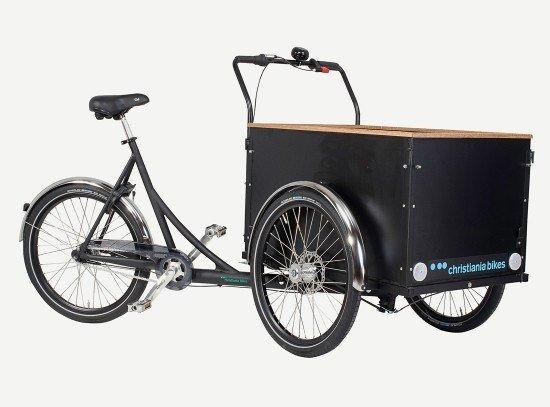

Add new comment
13 comments
The French perfected load carrying 80 years ago:
Low trail geometry plus front loading with a handlebar bag (not on the bars but a dedicated rack and as low and close to the steering axis as possible) and low rider panniers. You can carry anything between nothing and 20 kilos or more there without any adverse effects on handling. Nothing affects handling worse than a (heavy) rear load, especially one as high up and sticking out as much as those modern saddle bags.
My Burley Travoy trailer gets used most days, adds about 30kg carrying capacity or about 100litres in volume, and with a bit of ingenuity and some bungees can be persuaded to carry all sorts of weird stuff.
Trailers are brilliant. I have a BOB Yak. That is rated at 35kg, but 30 is comfortable limit due to wobble.
The Carradice QR system, with as big a saddlebag as you can get, is the best overall. That's a Camper Longflap- unfortunately, due to this only being used by Old Knackers, they still have to make it from crappy cotton duck. Please, Carradice, make it of Cordura and use proper rucksack type clips for the pockets and I will buy it and recommend it to the world!
.
Fine. But what will Lancs. police say?
.
Still think the tailfin is the best version of a pannier I've ever had. Expensive but rattle free and easy to fit to any bike.
When I started riding - on my main bike, a 2012 Mongoose hybrid - I always used a messenger bag. Then I started using panniers.
And now, every time I try to go back to using a bag (because I like how light the bike feels) I only do it for a few days and then go back to panniers (because although the bike feels heavier, I like how light I feel, if that makes sense?).
(On my other bike, a 1992 Dawes, I only ever use a saddle bag - Carradice, of course).
Just an update on this one. I've been using a messenger bag every day for my commute for the last year, now. A big Chrome Metropolis.
My favorite commute carrying option is a humble side basket that hooks over the rear rack with no other attachment than two hooks. It can be carried off the bike to go shopping and fits a rucksack. The downsides are that it's not attached, but I've not had major problems.
You still don't get panniers, do you? The starting point is not four, or two, it is one.
I use a minimal rack (Tubus Disco) and commute with a single (Ortlieb) pannier instead of a backback. The load is close enough to the centre line to be undetectable. Why? Because riding without a backpack is pure joy when compared to riding with one.
Ha - that is of course true. Because whereas, back in the day of Karrimor etc, panniers came as a pair just as surely as socks, now you only get one, for double the price generally. Payymor, karriless.
I wouldn't describe an e cargo bike as 'unwieldy'. Has the writer ever ridden a TERN GSD, or a Riese and Muller Load or Packster? Even the Urban Arrow is quite nippy and agile.
My CX bike is now converted to shopper, with rack and panniers. The load is behind the rear axle though, so handling is a bit lively.
Interesting to see a seatpost rack on a dropper post!